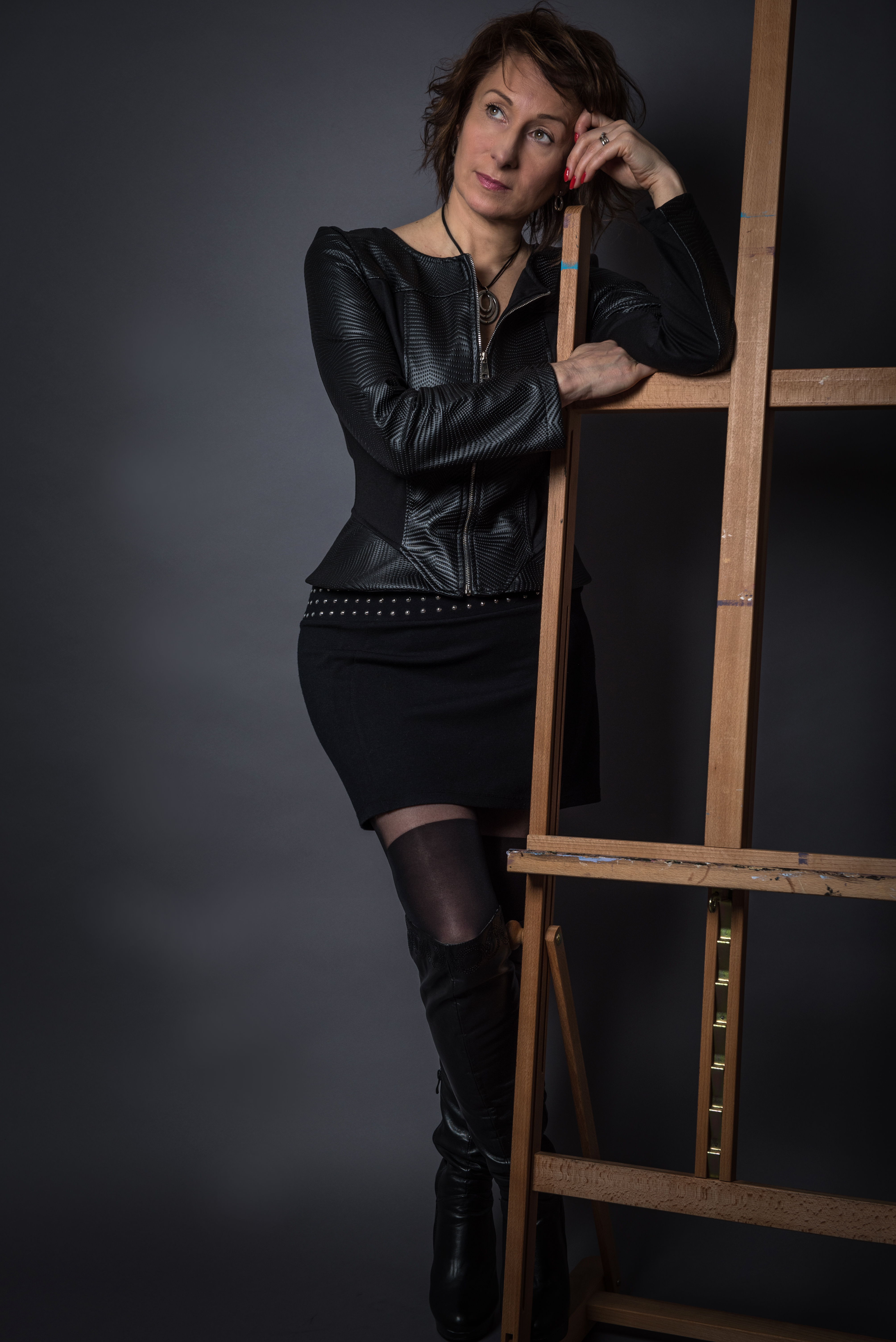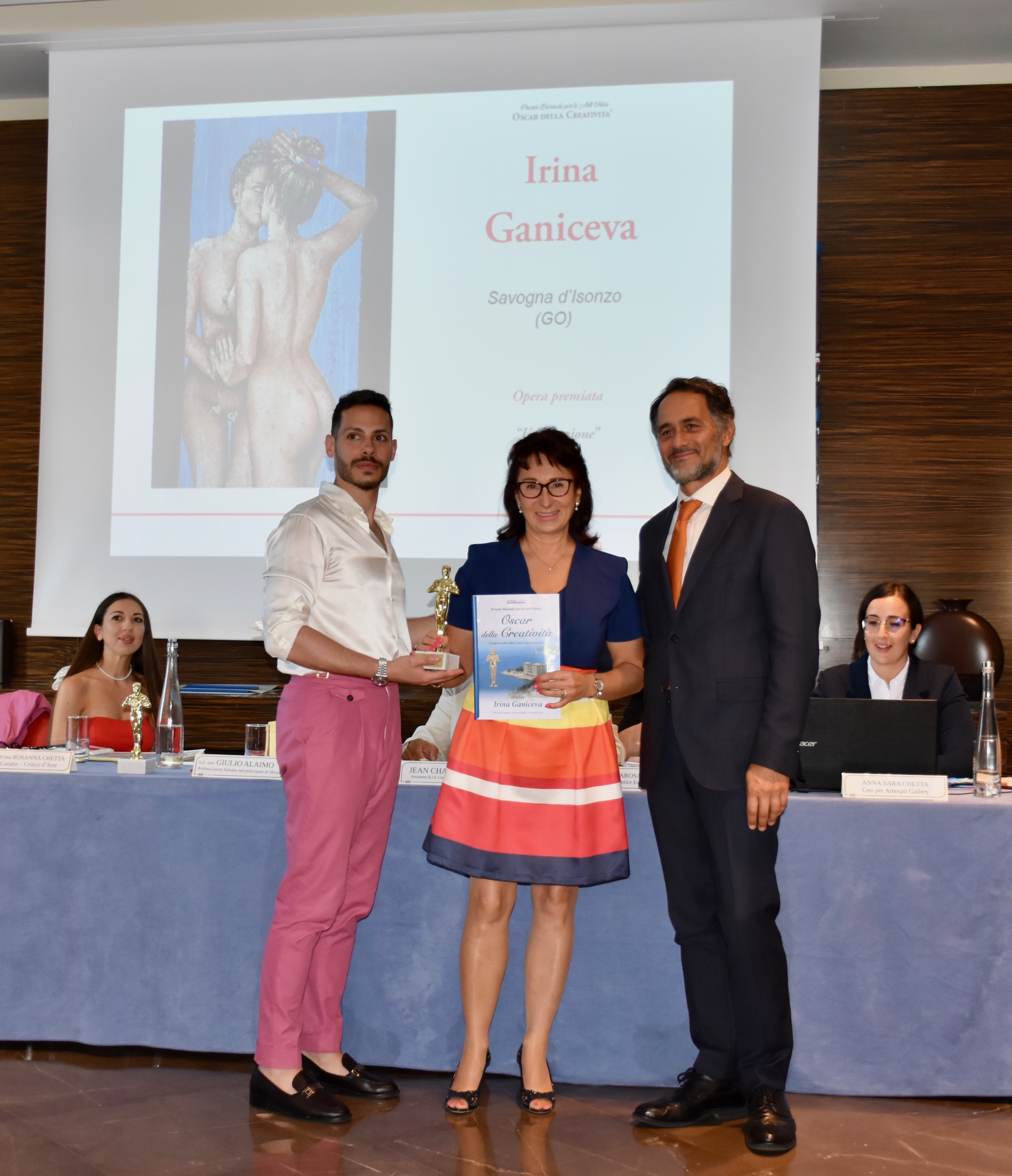...Ho scelto di farmi
sedurre dall’Arte
perché è la più dolce
delle violenze...
Dal diario di un anonimo
saggio cinese di XVI sec.
La biografia
La biografia di un artista autentico non dovrebbe contenere date. Il tempo dell’arte, come pensava già Василий Васильевич Кандинский (Vasilij Vasil’evič Kandinskij), ha poco a che vedere con il tempo comune.
L’artista, sembra, nasce vecchio e per conto rimane bambino per sempre, perché è capace di vedere – nel dettaglio e nell’insieme – ciò a cui gli altri
sono spesso ciechi o almeno ipovedenti. La biografia dell’artista deve però contenere luoghi, perché – sempre con Kandinskij – il suo compito precipuo è far sentire a chi non c’era come se ci fosse stato, in un eterno presente che è anche un ovunque.
Può trattarsi di luoghi dell’anima: vette, alture, bassure, abissi. Ma se sono invece luoghi geografici probabilmente è meglio: essi sono fisici, in essi si sta totalmente, anche con il corpo, che attraverso i sensi trasmette all’anima ciò che è bramosa di apprendere.
E questo, nel caso di Irina Ganiceva, è più vero che mai, essendo lei nata e vissuta a lungo appena sotto il Circolo Polare Artico.
La prima cosa che le ho chiesto quando l’ho intervistata per il presente scritto è stata se nella sua terra lo sciamanesimo è ancora diffuso. Lei mi ha parlato di popoli nomadi che per vivere allevano renne e pescano nei fiumi e nel Mare di Barents, quando l’andamento stagionale lo consente, cioè non sempre, visto che la massima temperatura dell’acqua, in agosto, è di 14-15 °C e negli inverni più rigidi il mare gela completamente. Data la situazione, è piuttosto comprensibile che Irina, parlando del posto dove è nata, lo descriva come terra di sciamani, di natura selvaggia, di petrolio e di metano, carbone e oro, di orsi, lupi e aquile.
Da casa sua, nelle giornate giuste, si vedono in lontananza gli Urali.
Sapendolo c’è da stupirsi se ad Irina, quando è venuta a stabilirsi in un piccolo paese tra le provincie di Trieste, Gorizia e Udine, sono occorsi anni per ambientarsi?
Ancora meno ci si stupirà scoprendo che ha compiuto i suoi studi parte ad Arcangelo parte a San Pietroburgo e che ha lavorato in Manciuria, a Vladivostok, nell’isola Sachalin (sul Mar del Giappone): in quei paraggi ha incontrato terremoti, tifoni e persone e culture di ogni genere. Un giorno, passeggiando nei boschi, ha avuto la sorte di incontrare anche…. una tigre. Poi è iniziato l’avvicinamento all’Occidente, passando per l’Ucraina. Quindi l’Italia, nel ’90. Sarà stato un caso oppure il destino, ma da questo punto in poi il percorso di Ganiceva comincia a interiorizzarsi, prendendo decisamente la direzione dell’arte (danza, musica, disegno). In contemporanea un disperato bisogno di leggere, che con ogni probabilità fa pendant con l’esigenza di spiritualità che l’ha spinta ad approfondire, tra l’altro, il Buddismo e a ritrovare il Cristianesimo Ortodosso. Infine, last but not least, arriva il “desiderio prepotente” – così lei lo definisce – di dipingere, i primi anni seguendo svariate rotte, sempre alla ricerca di qualcosa di proprio, di identitario. Infine dopo una lunga pausa (spesso sostare è indispensabile per chi vuole crescere in fretta) il suo nuovo stile che riesce ad essere, pur nella corposa matericità, insostenibilmente leggero e vibrante. E’ lo stile di una artista che sente e vede.
Quando ho chiesto a Irina Ganiceva, ovviamente per mia curiosità personale, qualche notizia sui rapporti di genere in Russia, mi ha risposto con un proverbio che mi ha colpito per la sua profondità: “Le donne amano con le orecchie, gli uomini con gli occhi”. Ebbene; Irina dipinge (ama) da donna: sa stare in ascolto delle grida e dei silenzi di animali, persone, cose. Ma dentro di lei c’è anche l’uomo che vede e guarda, osserva, registra. In questo modo si compie la sintesi, la meta più alta per l’anima di ogni artista più autentico.
Chiara Santagada

Biography
The biography of an authentic artist should be spared of any time date. The time of the art, as Vassily Vassilyevich Kandinsky said, has very little in common with conventional time. The artist seems to be old born, but on the other side remains a child forever, this because he is able to see (in detail and in whole) things that others can’t. The biography of the artist should be full of places, because – mentioning Kandinsky once more – the artist’s main goal should be to make the viewer feel as he was there, like in an eternal present which is also infinite places. These could be places in within the soul: mountain tops, highlands, valleys, depths. If these latter are geographical locations where you can be with your body, it could probably be better since using your senses it’s possible to convey to the soul what the soul itself is eager to learn. This is undoubtedly true for Irina Ganiceva, being she born and raised just below the arctic polar circle. The first thing I asked, when I interviewed her, was if the shamanism cult was still present where she lived. She told me about the nomadic people who practice reindeer breeding and fishing into rivers and the Barents sea for living, when the season allows it, since in winter the sea is completely frozen and in summer the water temperature never reaches more than 15° C. Once this situations has been agreed to, it is quite understandable that Irina, talking about the place where she was born, describes it as a land of shamans, full of wildlife, oil, gas, coal, gold, bears, wolves and eagles. From her house on a clear day you could see the Urals. Knowing this things about her past, is it a wonder if it took for her several years to settle down when she moved in a small town in Friuli Venezia Giulia. It is even less surprising when we assume that she studied in Arkhangelsk and in St. Petersburg, worked in Manchuria, in Vladivostok, and in the Sahalin Island on the Japanese Sea: in those places she came to know earthquakes, typhoons and every kind of people. One day, walking in the woods, she even had the chance to meet… a tiger! Then began the approach to the west, passing through Ukraine, and Italy, at last, in 1990.
Maybe it was the fate, but from this moment on, the path of Irina Ganiceva began to be more and more intimate, definitely taking the direction of art (dance, music, drawing). At the same time a desperate need to read, which probably was related to the need for spirituality that led her to investigate, among other things, Buddhism and rediscover the Orthodox Christianity. Finally comes the “overpowering desire” – as she calls it – to paint. The first years Irina followed various paths, always looking for something of her own, something that defines her identity. Then, after a long pause (stopping is often necessary for anyone who wants to grow up quickly) she began a new style that is going to be, even in dense materiality, unbearably mild and vibrant. It is the style of an artist who listens and sees. When I asked Irina to satisfy my own curiosity, some information about different gender roles and relationships in Russia, she answered with a saying that struck me for its depth: “women love with their ears, men with their eyes”. Well, Irina paints (loves) from a woman’s point of view, she knows how to listen to the shouts and silences of animals, people, things. But inside herself there is also the man who sees, watches, observes, records. In this way, the synthesis is performed, the highest goal of every true artist.
Chiara Santagada

Premio Biennale per le Arti Visive
Oscar della Creatività Conferimento della Critica Internazionale all'artista Irina Ganiceva per l'ottimo sviluppo creativo della sua ricerca e del suo profilo artistico.Principato di Montecarlo - 23 settembre 2023
